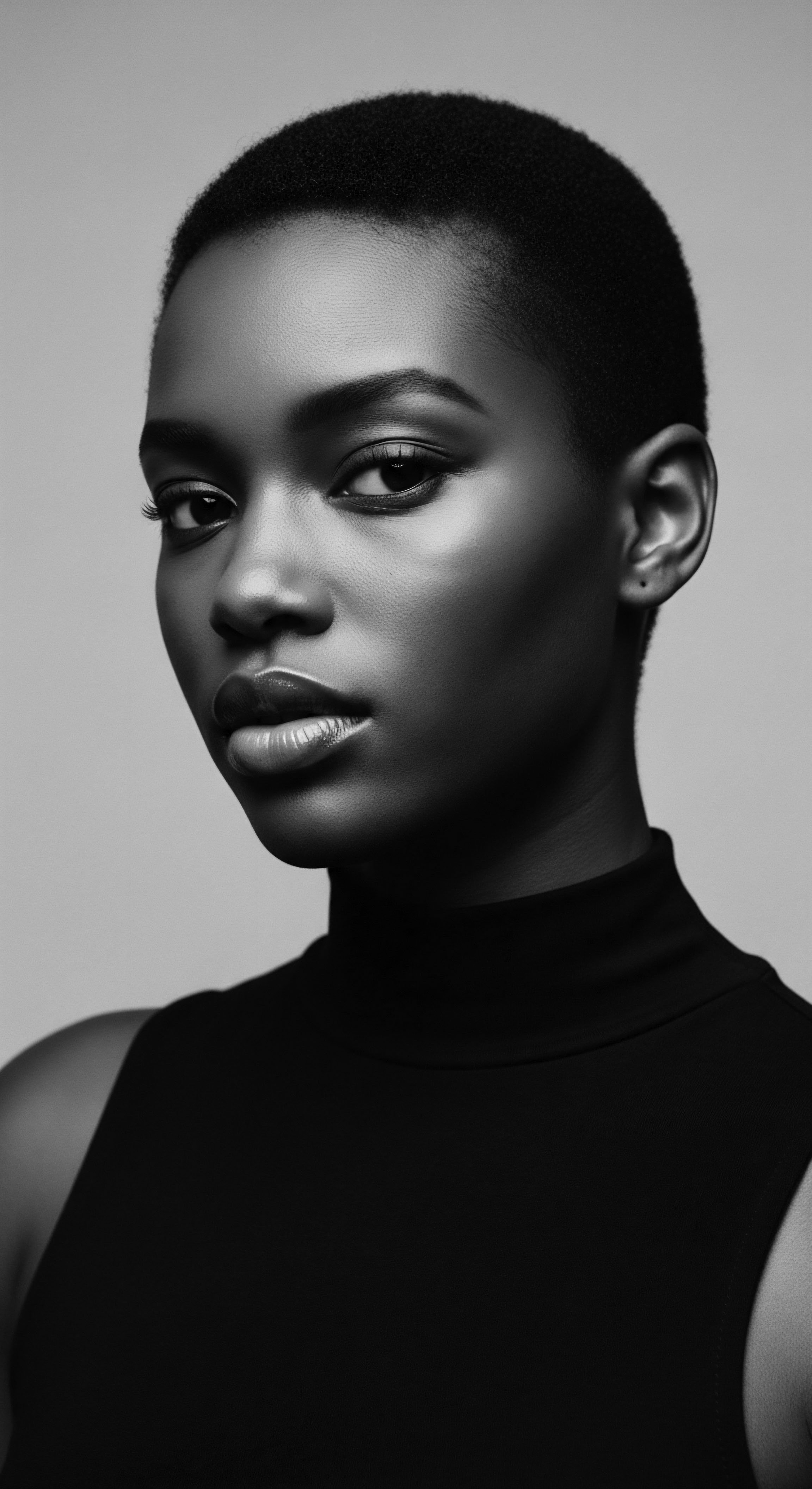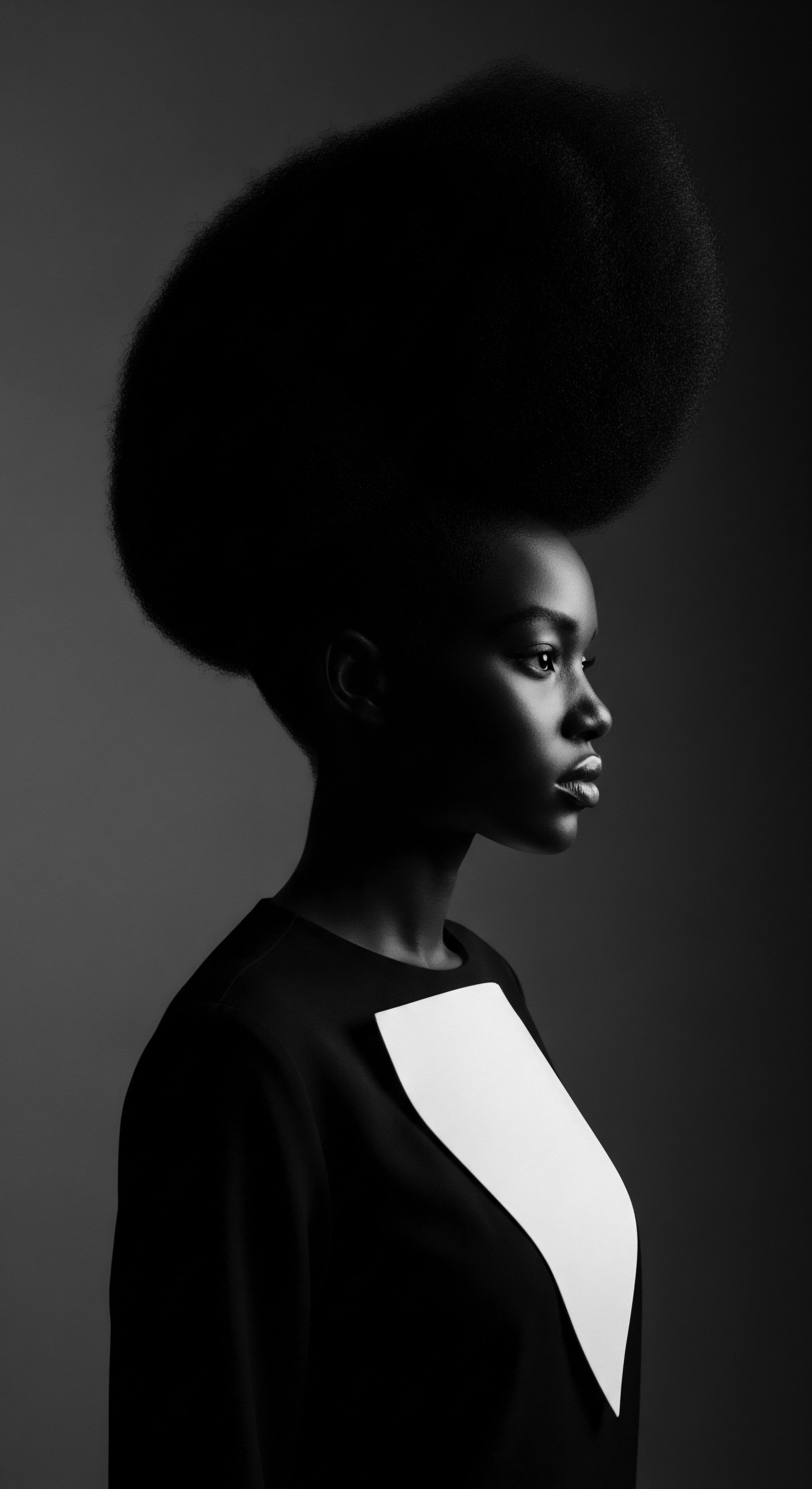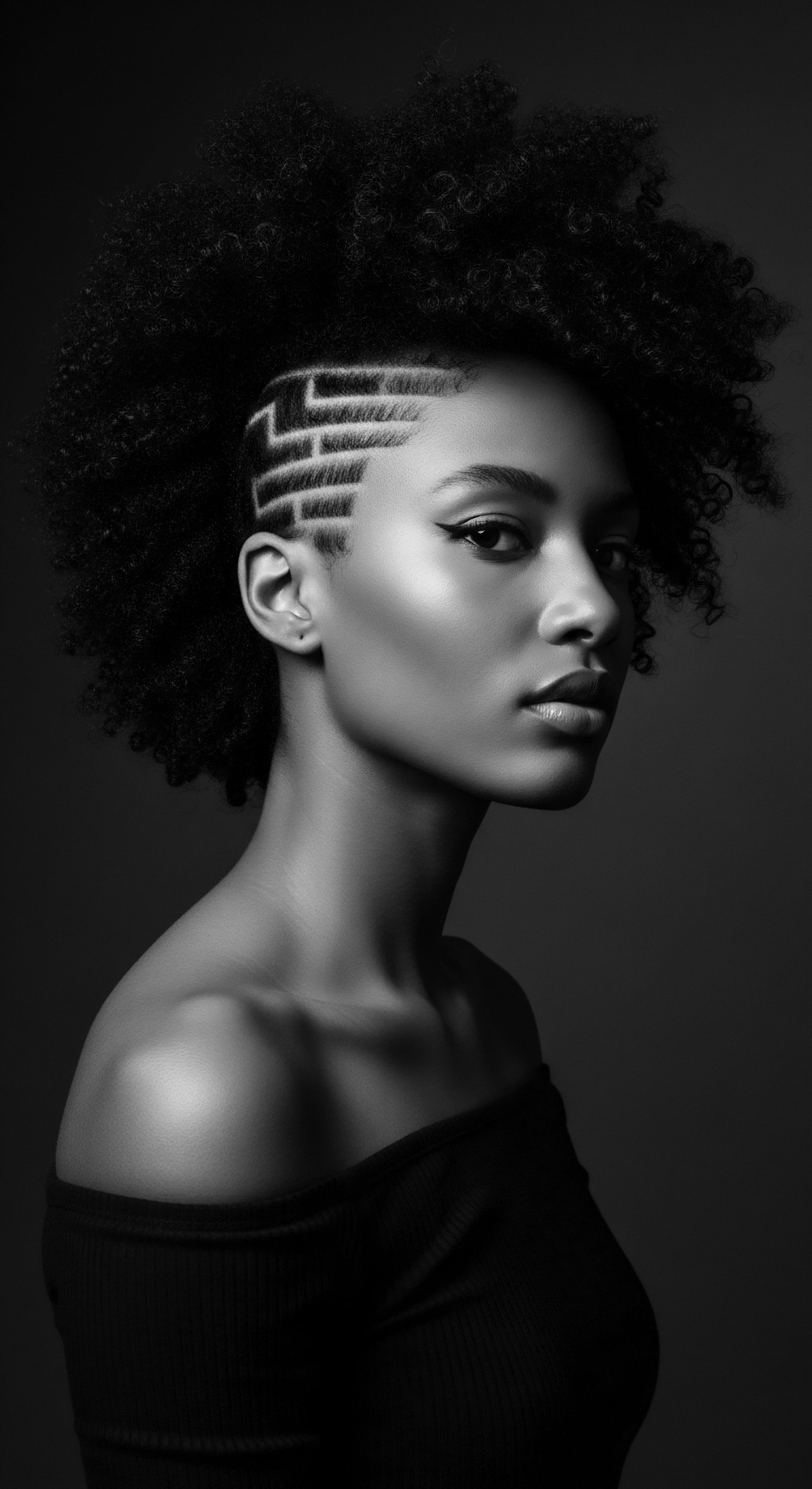
Roots
The very strands that crown our heads hold stories—ancient whispers of identity, resilience, and belonging. For communities whose heritage is deeply interwoven with textured hair, the recent phenomenon often termed the “natural hair movement” represents far more than a shift in style; it stands as a powerful resurgence, a reclaiming of ancestral practices that have, in turn, sparked profound economic uplift. It speaks to a deep, collective remembering of what was always ours ❉ the inherent beauty and strength of coils, curls, and kinks.
This journey back to source, to the heart of what our hair truly is, has not only transformed personal appearance but has also sculpted new avenues of enterprise and wealth, circulating resources within the very communities that nurtured these traditions for centuries. It is a story of economic flourishing born from a cultural awakening, rooted in the elemental biology of hair and the enduring wisdom of those who have always cared for it with reverence.

Echoes From the Source
Consider the biology itself. African hair, invariably curly, is characterized by its curved follicles and elliptical shaft, distinct from the rounder cross-sections of straight hair often seen in other populations. (Khoval & Rosette, 2020) This inherent curl, while a source of strength and beauty, also possesses particular needs—a propensity for dryness, a need for specific moisture retention, and a vulnerability to breakage if improperly handled.
For generations, this understanding was passed down through oral traditions, hands-on learning within families, and communal grooming rituals. These were not merely cosmetic acts; they were practices of survival, self-preservation, and cultural continuity in often hostile environments.
Before forced displacement and the imposition of Eurocentric beauty standards, African hairstyles served as intricate communication systems. Cornrows, for instance, date back to at least 3000 B.C. conveying status, age, wealth, and tribal affiliation. (Byrdie, 2022) Locs, too, have ancient origins, appearing in Hindu scriptures as “jataa” as early as 2500 B.C.
while Bantu knots draw their lineage from the Zulu tribe in Southern Africa. (Byrdie, 2022) The knowledge embedded in these styles—how to manipulate hair without damaging it, which natural concoctions would cleanse and nourish, how to protect it from the elements—was a form of inherited wealth, a legacy of care and ingenuity.
The embrace of natural textured hair transcends mere aesthetics, acting as a powerful economic catalyst deeply connected to ancestral practices and cultural identity.
The economic foundations of this contemporary movement find their earliest echoes in the informal economies that sustained communities through adversity. Enslaved African women, despite unimaginable hardships, managed to preserve hair care traditions, using homemade products and techniques passed down through generations. (Never the Less Inc, 2025) This persistence, this defiant act of maintaining a connection to heritage, laid a subtle yet powerful groundwork for future entrepreneurial endeavors. The ingredients themselves—shea butter, black castor oil, various indigenous herbs—were not just commodities; they were gifts from the earth, transformed through ancestral wisdom into agents of health and adornment.

The Language of Curls and Coils
The re-emergence of a lexicon that celebrates textured hair is itself a cultural and economic act. Terms like “kinky,” “coily,” and “curvy,” once used disparagingly, now describe specific hair types with pride, forming the basis for targeted product lines and specialized services. This shift in nomenclature has created a demand for authentic representation and products that truly address the unique characteristics of hair that defies conventional, Eurocentric classifications.
It prompted a re-evaluation of how hair is categorized, moving beyond limiting frameworks to a more expansive, inclusive understanding. (MDPI, 2021)
The growth of a market that values these diverse textures has spurred entrepreneurs to develop products previously unavailable or ill-suited for Black and mixed-race hair. This has meant researching and developing formulations that prioritize moisture, definition, and gentle care, often returning to the very ingredients and methods that sustained hair health for centuries. The intellectual property of ancestral knowledge, often uncredited and uncompensated, is beginning to find a place in this renewed economic landscape, albeit imperfectly.

Ritual
The economic uplift experienced by communities rooted in hair heritage is a direct outcome of the natural hair movement’s re-sanctification of care rituals and styling practices. This resurgence has not just shifted consumer preferences; it has breathed new commercial life into methods once considered “alternative” or simply “ethnic,” transforming them into thriving, legitimate sectors of the beauty industry. The tender, deliberate acts of washing, conditioning, styling, and protecting textured hair have become the core of a burgeoning market, driven by a desire to reconnect with authenticity and ancestral wisdom.

The Sacred Acts of Hair Care
At its heart, the natural hair movement is about returning to practices that honor the unique needs of textured hair. This reverence for hair health, often instilled through generational knowledge, manifests as elaborate and attentive regimens. These daily or weekly rituals, from pre-poo treatments to deep conditioning, from careful detangling to protective styling, collectively represent a significant economic opportunity. Each step requires specific products, tools, and, often, the expertise of a professional.
Consider the ancestral roots of today’s sought-after ingredients. Shea butter , often called “women’s gold” in West Africa, has been a cornerstone of traditional skin and hair care for centuries. (FAO Knowledge Repository, 2014) Its rich emollient properties, passed down through generations, became central to the natural hair product revolution. In 2010, the United States Agency for International Development (USAID) reported that the shea sector in West Africa generated between $90 million and $200 million annually from sales and exports, supporting approximately 3 million women.
(FAO Knowledge Repository, 2014) This is a powerful testament to how a traditional ingredient, steeped in heritage, can become a driver of substantial economic activity. Likewise, Jamaican Black Castor Oil (JBCO) , traditionally produced by former enslaved individuals in rural communities of Africa and brought to the Caribbean, is renowned for its thick consistency and purported hair growth properties. (Jamaica Information Service, 2023) The global market for JBCO alone is valued at an estimated $300 million per year. (UWI Mona, 2024) These are not merely botanical curiosities; they are foundational elements of a heritage economy, providing income for countless individuals involved in cultivation, processing, and distribution.
The demand for such natural, traditional ingredients, often sourced directly from communities with deep knowledge of their properties, has fueled a direct economic pipeline. Small businesses, many of them Black and mixed-race owned, have sprung up to meet this demand, creating products that speak directly to the needs and desires of a re-awakened consumer base. This direct investment supports local economies at multiple points—from the farmers and harvesters of raw materials to the formulators and distributors of finished products.

From Kitchen to Commerce
The natural hair movement normalized “DIY” hair care, with many individuals initially creating their own remedies at home. This experimentation, rooted in ancestral ingenuity and the need for tailored solutions, quickly evolved into micro-enterprises. These humble beginnings, often in home kitchens, transformed into legitimate businesses as demand outstripped individual production capacity.
This phenomenon created a new category of entrepreneur ❉ the kitchen chemist, the self-taught stylist, the community educator. These individuals, often Black women, leveraged their personal experiences and collective knowledge to build brands and services that resonated authentically. The informal salons, the pop-up shops, the online communities discussing ingredient efficacy and styling techniques—all became economic incubators.
This shift is particularly striking when one considers that in 2019, businesses owned by African American women grew by 164% from 2007 to 2019, with much of this growth concentrated in the beauty and personal care sectors, significantly propelled by the natural hair movement. (Vertex AI Search, 2023)
| Heritage Practice Ancestral Hair Oiling |
| Traditional Ingredients/Methods Shea butter, Black castor oil, coconut oil, indigenous herbs (e.g. neem, moringa) |
| Modern Economic Pathway Product development, small-batch artisan sales, global ingredient sourcing, Black-owned beauty brands. |
| Heritage Practice Protective Styling (Braids, Locs) |
| Traditional Ingredients/Methods Natural fibers, communal styling sessions, oral transmission of techniques |
| Modern Economic Pathway Specialized salons, freelance stylists, hair extension production (textured), training academies, cultural events. |
| Heritage Practice Herbal Cleansing |
| Traditional Ingredients/Methods Plantain skins, cocoa pods, palm oil (African Black Soap) |
| Modern Economic Pathway Development of natural shampoos/cleansers, ethical sourcing, eco-friendly product lines. |
| Heritage Practice These traditional practices, deeply rooted in textured hair heritage, have directly inspired and fueled the economic expansion of the natural hair care market. |

The Professional Landscape Transformed
The surge in demand for natural hair services necessitated a transformation in the professional styling world. Many stylists, previously trained in chemical straightening techniques, had to re-skill, learning to work with natural textures, protective styles, and extension methods that preserve hair health. This created a demand for new educational programs and certifications, further stimulating the economy.
Hair salons dedicated solely to natural hair began to appear, offering specialized services like twist-outs, bantu knots, loc maintenance, and natural hair coloring. This hyper-specialization allowed these businesses to capture a dedicated market segment, providing jobs and entrepreneurial opportunities within Black communities.
Moreover, the natural hair movement has impacted the market for hair extensions and wigs. While these existed before, there was a noticeable increase in the availability of textured extensions—kinky, coily, and curly—that blended seamlessly with natural hair. (Danified Hair Co. 2024) This innovation, driven by consumer demand for authenticity, led to new manufacturing and retail opportunities, ensuring that the economic benefits circulated within the community.

Relay
The economic relay of the natural hair movement extends far beyond individual transactions; it represents a profound shift in market power, supply chains, and the very narrative of beauty. This dynamic movement has propelled communities, particularly Black and mixed-race individuals, into positions of economic agency, challenging historical disparities and establishing a vibrant, self-sustaining ecosystem built on shared heritage. It is a complex interplay of consumer demand, entrepreneurial spirit, and a collective determination to define beauty on one’s own terms.

Reshaping the Market Landscape
For too long, the beauty industry serving Black consumers was dominated by large corporations, often without authentic understanding or representation of textured hair. The natural hair movement decisively altered this landscape. As Black women increasingly rejected chemical relaxers, a product segment that saw sales fall by 18.6% between 2016 and 2021, the dollars once spent on these altering treatments redirected to products specifically formulated for natural hair care. (Mordor Intelligence, 2020), (Aithor, 2024) This redirection of consumer spending created a massive opening.
Black consumers account for over 85% of the natural and ethnic hair care market. (C+R Research, 2024) Yet, despite this immense purchasing power, Black-owned brands initially held a disproportionately small share of the market. In 2021, Black brands captured only 2.5% of total beauty industry revenues, even though Black consumers were responsible for 11.1% of total beauty spending. (McKinsey & Company, 2022) This disparity highlights both the historical challenge and the immense economic opportunity the movement sought to address.
The rise of Black-owned hair care brands represents a direct economic uplift. Companies like SheaMoisture, which started as a street-vending operation, grew exponentially, moving into mass retail and eventually being acquired by larger entities, a testament to the market power Black consumers wielded. (Mintel, 2017) This growth created wealth, jobs, and further investment within communities. Moreover, the movement sparked a new wave of entrepreneurs.
African-American women’s businesses, particularly in beauty and personal care, experienced significant growth, contributing to overall economic expansion. (Vertex AI Search, 2023)
This economic revitalization extended to the informal economy as well. Many stylists, product creators, and educators began their work outside traditional corporate structures, building their clienteles and brand recognition through word-of-mouth and burgeoning online communities. This decentralized economic activity, operating on a grassroots level, recirculated money directly within local communities.

A Statistic’s Unfolding Story ❉ The Crown Act
Beyond direct product sales and service provision, the natural hair movement has influenced policy and legal frameworks, creating a more equitable economic environment. One powerful example is the CROWN Act, an acronym for “Creating a Respectful and Open World for Natural Hair.” This legislation, first passed in California in 2019, aims to prohibit discrimination based on hair texture and protective hairstyles in workplaces and schools. (Folklife Magazine, 2022)
Consider this critical statistic ❉ The CROWN 2023 Workplace Research Study found that Black women’s hairstyles were 2.5 times more likely to be deemed unprofessional compared to other hairstyles. Additionally, 41% of Black women altered their hair from curly to straight for job interviews, and 54% believed they should have straight hair for such occasions. (Smith Scholarworks, 2023) This discriminatory reality had a tangible economic cost, limiting job prospects, promotions, and income potential for Black women. By combating such discrimination, the CROWN Act aims to remove barriers to economic participation, ensuring that Black individuals are judged on their skills and qualifications rather than their hair, thereby expanding their economic opportunities and contributing to a more equitable workforce.
The CROWN Act, a legislative triumph born from the natural hair movement, works to dismantle economic barriers rooted in hair discrimination, thereby broadening opportunities for Black individuals in the workplace.
The passage of the CROWN Act in multiple states and municipalities signals a systemic recognition of hair as an integral part of racial identity and a protected characteristic. This legal shift supports economic mobility by challenging entrenched biases that previously restricted Black individuals from certain professional spaces. It allows for fuller participation in the workforce and contributes to an environment where Black professionals can thrive without having to conform to Eurocentric beauty standards.

Global Supply Chains and Local Impact
The movement also amplified the significance of specific heritage ingredients, impacting global supply chains and creating opportunities for communities in Africa and the Caribbean. The demand for shea butter from West Africa and Jamaican Black Castor Oil from Jamaica exemplifies this.
- Shea Butter ❉ Sourced primarily from the “shea belt” across West Africa, its production is largely a women-dominated industry. Around 3 million women are employed in the shea sector across West Africa, generating significant annual income. (FAO Knowledge Repository, 2014) The rising global demand, particularly in cosmetics, directly supports these rural women, providing crucial household income and fostering economic agency. (Trade for Development News, 2024)
- Jamaican Black Castor Oil ❉ With its historical ties to ancestral African knowledge, JBCO has gained international acclaim. While Jamaica’s market share in the global castor oil industry is relatively small, the global market for JBCO itself is estimated at $300 million per year. (UWI Mona, 2024) Efforts are underway, such as research at the Mona Institute of Applied Sciences in Jamaica, to reclaim and expand Jamaica’s presence in this market, which seeks to protect the intellectual property rights of this heritage product. (UWI Mona, 2024)
These are not isolated instances; rather, they reflect a broader trend where the cultural value placed on specific heritage ingredients translates into tangible economic benefits for the communities that cultivate and process them. It creates a circular economy, where cultural pride drives consumer demand, which in turn supports traditional practices and local livelihoods.
The natural hair movement has also spurred a new era of media and educational platforms. Content creators, often Black and mixed-race individuals, built vast online communities on platforms like YouTube and Instagram, sharing styling tutorials, product reviews, and personal hair journeys. These digital spaces became powerful economic engines, generating advertising revenue, brand partnerships, and direct sales of their own products.
They democratized access to information and expertise, previously concentrated in mainstream beauty media, and centered it within the community itself. This new media ecosystem reinforces cultural pride while simultaneously providing economic sustenance for its creators.

Reflection
The journey of the natural hair movement, from ancient whispers to modern market force, is a profound testament to the enduring power of heritage. It reveals how reclaiming a deep-seated cultural identity can, quite literally, build economies and uplift communities. The textured strand, once a symbol of struggle, now represents a helix unbound, spiraling into futures where cultural pride and economic prosperity are inextricably linked. The vibrancy of Black and mixed-race hair, with its myriad forms and textures, mirrors the dynamism of the entrepreneurial spirit it has unleashed.
This is more than a momentary trend; it stands as a fundamental realignment, an assertion that value resides not solely in external validation, but within the rich archives of ancestral knowledge and self-acceptance. The economic landscape it continues to sculpt—through the hands that process shea butter in West Africa, the laboratories that formulate new products tailored for curls, the stylists who celebrate every kink and coil, and the myriad businesses born of personal journeys—serves as a living, breathing archive of resilience and creativity. It is a powerful affirmation that the deepest connections to our past can indeed illuminate and enrich our collective future, securing legacies for generations to come.

References
- Byrd, A. D. & Tharps, L. D. (2014). Hair Story ❉ Untangling the Roots of Black Hair in America. St. Martin’s Press.
- Donahoo, K. & Smith, J. (2019). #TeamNatural ❉ Black Hair and the Politics of Community in Digital Media. Social Media + Society.
- FAO Knowledge Repository. (2014). The impact of the shea nut industry on women’s empowerment in Burkina Faso. Food and Agriculture Organization of the United Nations.
- Folklife Magazine. (2022, November 7). It’s More Than “Just” Hair ❉ Revitalization of Black Identity. Smithsonian Center for Folklife and Cultural Heritage.
- Jamaica Information Service. (2023, March 17). Black Castor Oil – Liquid Gold Untapped.
- Khoval, C. Z. & Rosette, A. S. (2020). The Professionalism Penalty ❉ The Impact of Natural Hairstyles on Black Women’s Job Prospects. Social Psychological and Personality Science.
- McKinsey & Company. (2022, June 10). Black representation in the beauty industry.
- Mintel. (2017, August 10). Money flowing into the natural hair industry is a blessing and curse for those who built it up.
- Mordor Intelligence. (2020). South Africa Haircare Market.
- Never the Less Inc. (2025, February 11). History of Black Hair Care.
- Smith Scholarworks. (2023). Black women’s natural hair care communities ❉ social, political, and cultural implications. Smith College.
- UWI Mona, The Faculty of Science and Technology. (2024, August 20). Jamaican Black Castor Oil Market poised for expansion.
- Vertex AI Search. (2023, June 20). The Economics of the Natural Hair Movement ❉ The Rise of Loc/Dreadlocks Entrepreneur.
